Osaka Outtakes
Osaka may not have as many specific tourist sites opulent temples as its more popular neighbor Kyoto, but is a wonderful place to visit in its own right.
COUNTRIES
Ironically, given our decision to travel the world, we don't particularly like long travel days. And we had one getting back from Hokkaido to our next destination. Twelve or so hours after leaving Noboribetsu and the island of Hokkaido, we arrived in Osaka. I had never been to Osaka previously, despite living there for several years as a kid, though I always associated the city with tigers (maybe a sports reference?). They do in fact have a lovely zoo though we didn’t get a chance to visit. Instead, we made our way to Osaka Castle, turning the sight-seeing venture into exercise: we jogged from our hotel along the the scenic river, and along the castle's moat to the main entrance. The castle offered spectacular city views and several informative exhibits on the construction and history. The Osaka Museum, a 15 minutes walk away went provide much more detail on the Castle and history of the city in general. The museum offered incredible computer generated 3-D projections inside dioramas (very hard to explain) depicting the life and accomplishments of Hideyoshi Toyotomi, the man who rose from poor upbringings to top feudal lord and who was responsible for building the Osakal Castle. We also learned about Osaka life over the centuries; Osaka was long an extremely important industrial center, andw as at one point more populace that Tokyo in the early 1900s! Today, Osaka has been given a face lift and is known more as a foodie town; while no single meal stood out for us, we greatly enjoyed every mal we had there. After so much history and museuming, I was exciting to sit down and eat another of my favorite childhood snacks, Takiaki at one of the food vendors nearby.
I decided to run the Castle Moat and park several more times during our time in Osaka and in doing so noticed street markings indicating mileage, start lines and directional arrows, making me this must be used for an annual and popular run. I certainly was inspired and enjoyed my jogs there.
The other major highlight of our Osaka visit was the opposite of the peaceful Sumiyosha Taisha: the frenetic, neon-lit streets of Dotonobori. Located adjacent to main canal, the narrow streets and bridges of this famous neighborhood are chalk full of a neon lights, animatronic sign advertisments (like a giant crab, or a moving giant ramen bowl) and generally had a ton of restaurants, bars and shops. Like other cities there was an arcade-style covered mall leading up to this area, but once you stepped across the bridge it quickly escalated to Times Square level intensity. We enjoyed our walk through on the way to an old video games and arcade bar Dana had picked for us where she thought I’d enjoy the nostalgia of Nintendo. We found the bar full expats and games, and had fun chatting with several of them. It was another example of how incredibly thoughtful my wife is (she reads the posts to edit them so she should see this ;p).
Dana had read about and was excited to try out a temple stay--which is just like it sounds, the chance to stay the night at a Buddhist Temple and sometimes interact with monks and learn about their practices. I had finally found one that seemed to fit our itinerary, so I booked it for just one night at the end of our time in Osaka. It proved to be less of a temple itself but more a hotel run by a monk and surrounded by temples. Not exactly what we had in mind, but it still allowed us a peak into buddhist practices. It also happened to be very nearby a very lovely city park, Tennoji, which we strolled through and stopped in at a lovely cafe and a traditional Japanese garden. About this time Dana got me hooked on a fantasy novel (Mistborne trilogy by Branden Sanderson, highly recommend) and I was very focused, listening to the audiobook throughout the day.
Other highlights: we got a head spa2, had our second Gaku parfait near Dotonobori, enjoyed world class udon (the dipping kind) and checked out the shops and side streets around Umeda where we stayed for the majority of the week. Short stay in a very livable city before we made our way to Kyoto.
The following day, we took a cute trolley like train down to Sumiyoshi Taisha, a beautiful and peaceful Shinto1 shrine and compound. The shrine amazingly dates back to the 3rd century without a major "it all burned down" story to tell, and featuring a beguiling domed red bridge, many separate little shrine buildings, and hundreds of red flags and stone lanterns.
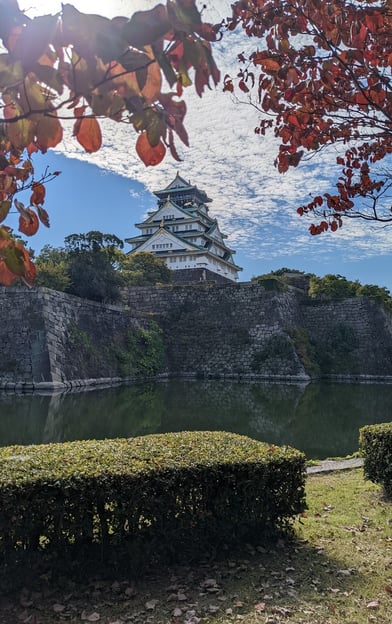

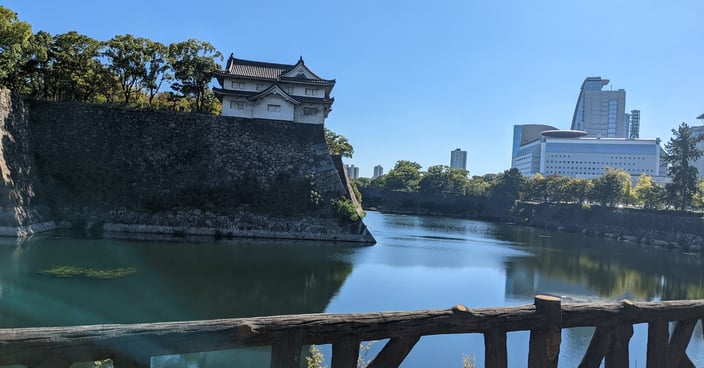

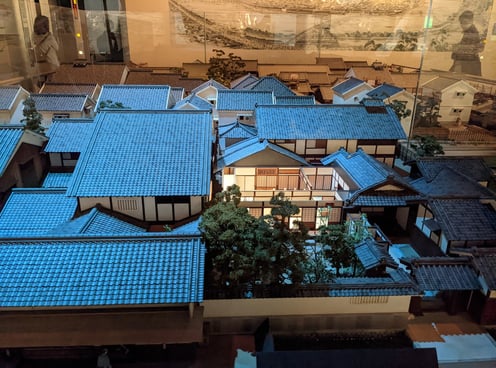

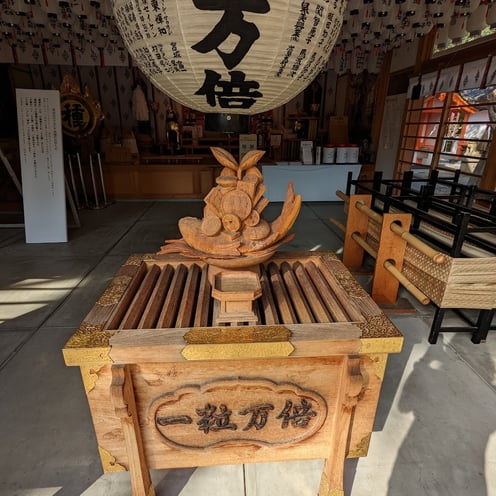

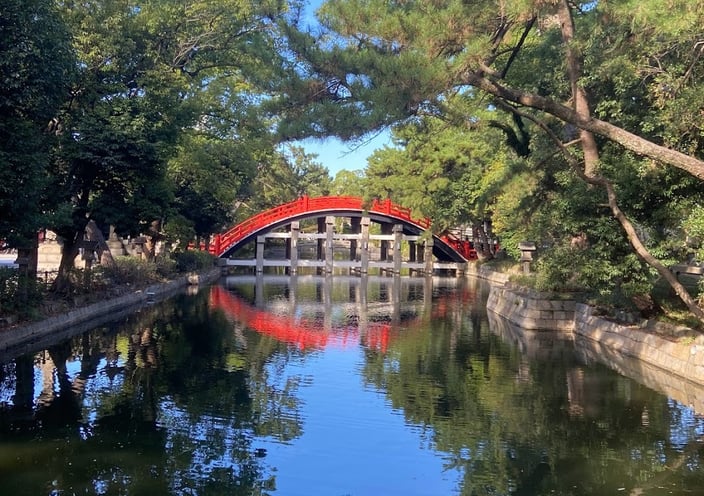

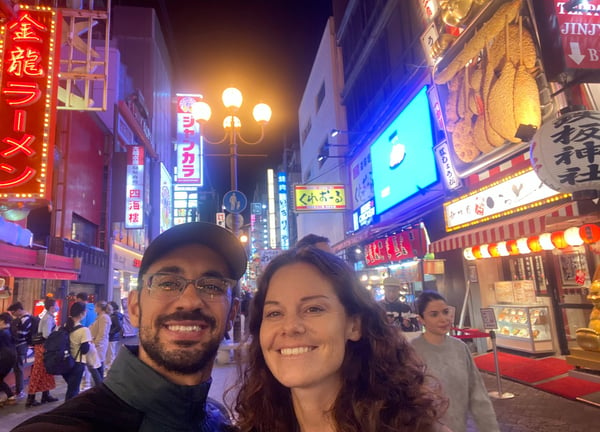

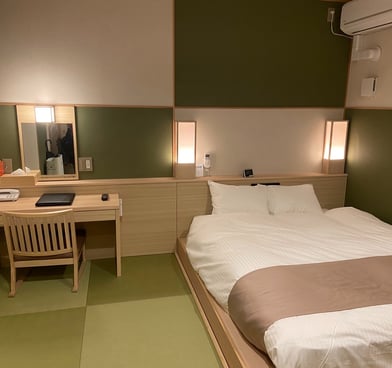

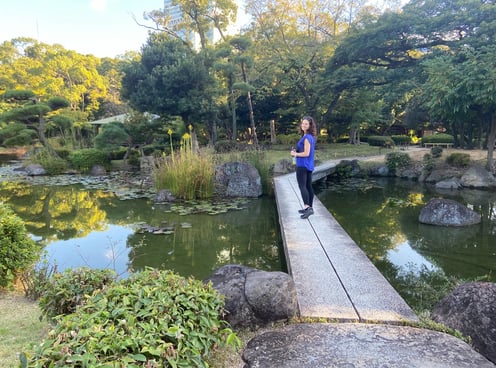

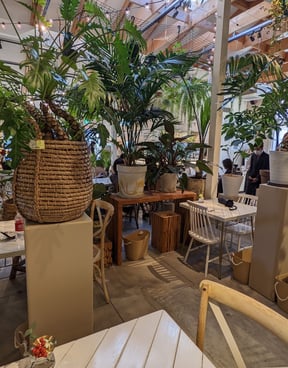

Footnotes:
1) Shinto is a religion unique to Japan, and is practiced by roughly 60% of the Japanese people. It probably best fits under the animism label, as each place, and object in nature (e.g. a mountain, a stream, an animal) is seen has having a a spirit or kami. Many kami have a shrine, where priests oversee the buildings and offerings of food and drink are given. This is done to cultivate harmony between humans and kami and to solicit the latter's blessing. Hopefully didn't I butcher the religion too much here!
2) Head Spas are one of those pamper yourself experiences that only exist in Asia. Dana stumbled upon them on YouTube where its just rife with ASMR videos that take you through the entire Head Spa experience. It's quite elaborate, usually consisting of steaming (your scalp is wrapped into a zippy bag and steam pumped in), washings with several shampoos and lovely smelling clarifying stuffs, then massaged, and rinsed. We enjoyed ours immensely!
Keep in touch!
The moat and various guard posts are surrounded by park and create lovely views from every side. The Osaka museum told the history of the Castle, built by its most famous Shogun warrior, and told the story of Osaka with a range of creative and interactive exhibits, including this one: a large model of a village that lit up certain sections as it described what would happen in that space!
Sumiyoshi Taisha was the largest and most beautiful Shinto complex we visited. The rounded red bridge is many centuries old. Small, carved, wooden shrines to different nature spirits (kami) were in many separate buildings between winding paths bordered by red banner flags and stone lightposts.
Neon lights of Dotonbori!
Our "temple stay" was more like a spartan hotel, but the monk who ran it was very sweet! The nearby gardens and cafes inside it were absolutely delightful.
